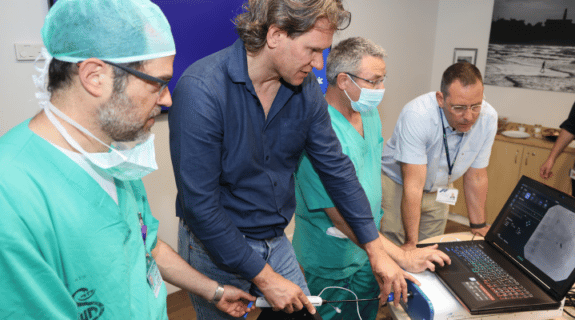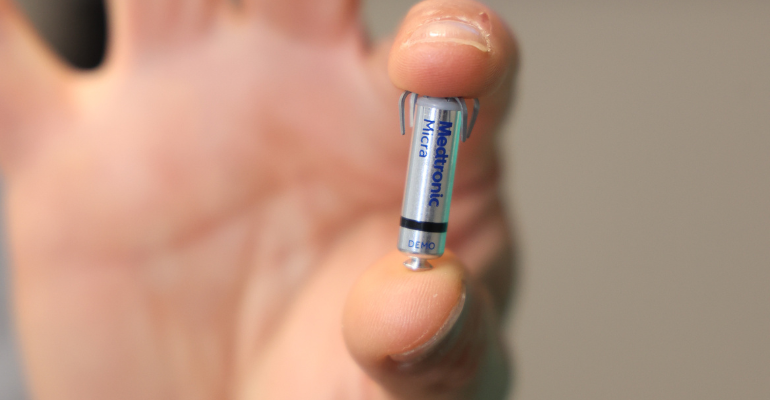
Medtronic made history six years ago when FDA approved the Micra leadless pacemaker on April 6, 2016. The device represented a major innovative leap in pacemaker technology, and also became a prime example of how medical device manufacturers continue to push the boundaries of what’s possible in medtech miniaturization. The device has been adopted by top medical centers, including Sheba Medical Center in Ramat Gan, Israel.
Sheba announced this week that Medtronic International has authorized it to provide training on Micra pacemaker implants for experts in arrhythmia treatment. Seven doctors from hospitals across Israel participated in Sheba’s first training, which was led by Eyal Nof, director of the Invasive Electrophysiology Service at Sheba and a certified facilitator to conduct training on the subject.
Unlike traditional pacemakers, leadless pacemakers do not require an incision in the chest to implant the device or cardiac leads to deliver therapy. Rather, the leadless device is implanted through a vein in the groin. They are also much smaller than the conventional pacemakers. Medtronic had been the only company with a leadless pacemaker on the U.S. market until a couple of months ago when FDA approved Abbott’s Aveir VR leadless pacemaker.

Image courtesy of Sheba Medical Center
Medtronic’s Micra is currently intended for patients who, for technical or medical reasons, cannot undergo pacemaker implantation with electrodes (such as patients with venous obstruction). It is also suitable for patients with a high risk of infection from the implantation of a traditional pacemaker and without which they would be left without a medical response which may put them at high risk of significant complications. Over the past year, more than 150 patients have undergone the procedure in various indications, Sheba noted.
Clinical studies published in recent years, which included thousands of patients who underwent a Micra procedure, showed that for the vast majority of patients, the procedure was successful, the rate of infections was significantly lower, and the rate of complications was significantly lower than that of a standard pacemaker transplant (a reduction of about 60% in the rate of complications), according to Sheba.
The medical center European Cardiological Association has recommended in its latest guidelines on pacemakers that Micra should be implanted as an alternative to normal pacemakers in patients with appropriate indications.
Sheba touts that it is the largest and most comprehensive medical center in the Middle East. The campus consists of an acute-care hospital, rehabilitation hospital, research and innovation hubs, a medical simulation center, and a center for disaster response. Sheba is also a university teaching hospital affiliated with the Sackler School of Medicine at Tel-Aviv University.
Last November, FDA flagged the risk of major complications if cardiac perforation occurs during leadless pacemaker implantation. Although cardiac perforation is a rare complication (occurring in roughly 1% of cases) of any pacemaker implant procedure, real-world data suggests that the risk of major complications following cardiac perforation may be higher in patients who receive a leadless pacing system versus a traditional transvenous pacemaker. The agency encouraged doctors to report leadless pacemaker cardiac perforations and related complications to the device manufacturer and FDA.
Published June 23, 2022 MDDI Online